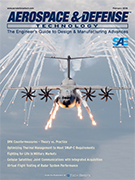Event
AeroTech®
2024-04-30
New for 2022, AeroTech® will deliver even more robust programming by teaming up with AeroMat to deliver learning opportunities dedicated to: Additive Manufacturing and Materials, Environment and Sustainable Aviation (Sustainability), Autonomy and AI, Safety and Human Factors, Modeling, Simulation and Testing, Cybersecurity / Cyber-Physical Security, Industry 4.0 Smart Manufacturing and Assembly, IDEAL Summit (inclusion, diversity, equity, accessibility and leadership), Advanced Air Mobility (AAM) and Multimodal Mobility (M3)





